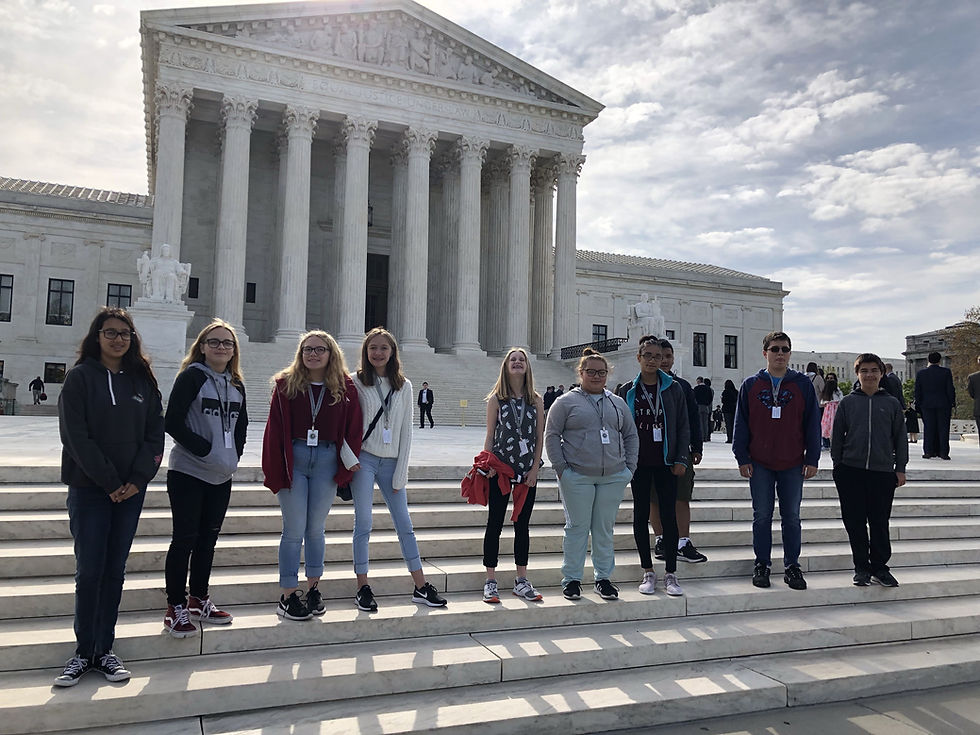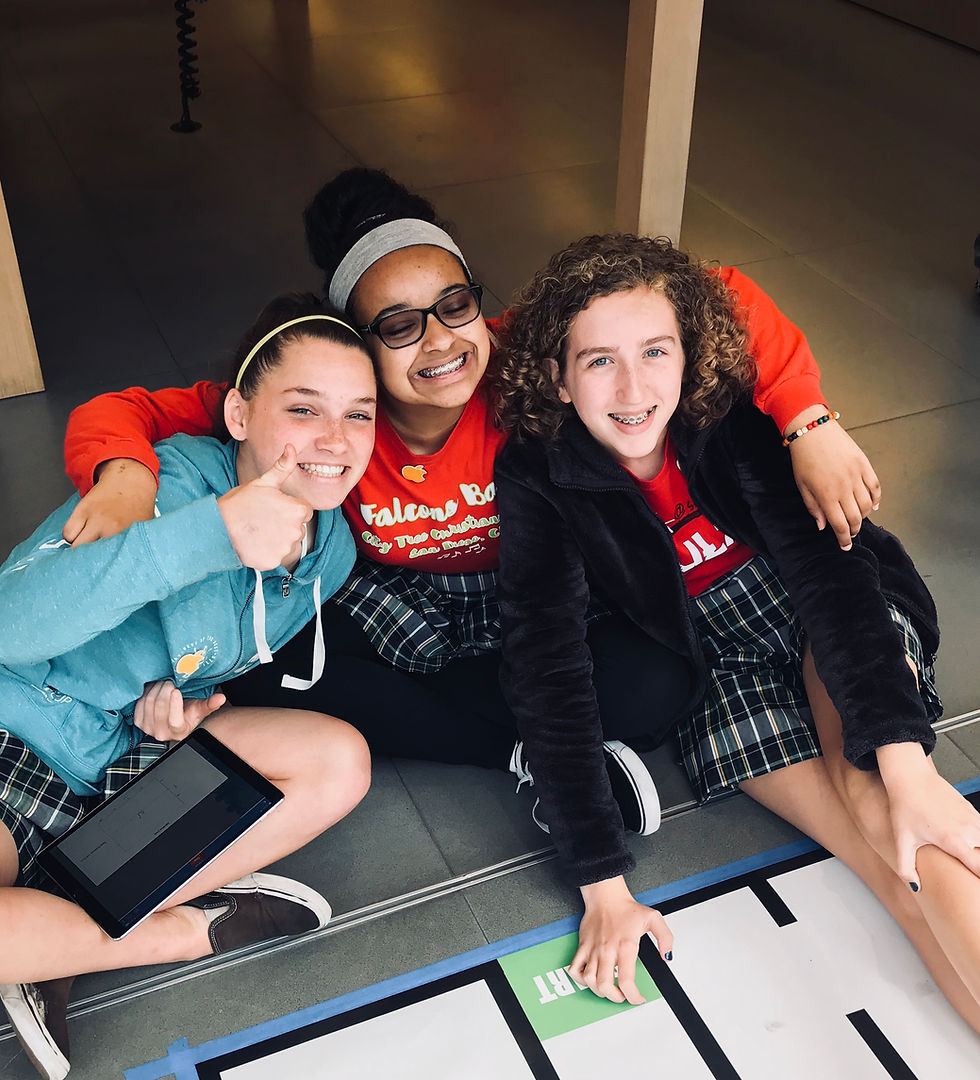The Cognitive Magic of Storytelling
- saradelgado5
- Feb 8, 2019
- 5 min read
It’s my 3-year-old’s favorite request these days, followed closely by asking to change into another princess dress.
“Mama, can you tell me a story?”
There are many moments when I feel too tired or distracted to conjure up another narrative—but I know it’s the best thing I can do for her developing brain to let a plot unfold.
Why? New research points out the incredible effects storytelling has on the brain: it improves retention, increases engagement, and helps listeners bond with the figures at the center of the story. Everyone from business leaders, to politicians, to lawyers, to advertisers are finding new ways to revolutionize their messaging, using the power of storytelling.
The same opportunity exists for educators to enhance their students’ learning and interest. Here are some of the ways educators can utilize storytelling’s effects on the brain to give their instruction a boost:
Use stories to increase students’ retention
Cognitive psychologist Jerome Bruner determined that we remember 22 times more from stories than we do from hearing a random collection of facts.
Let’s test that out: without looking back at the previous sentence, can you repeat the name of the cognitive psychologist I just identified? Now, can you name the protagonist from your favorite movie? Most research indicates you’d be successful with the latter, and not the former.
Stories help us sort bits of random data into a pattern that is recognizable and memorable. Our brains are hardwired to look for these patterns; humanity has survived and thrived by identifying patterns of cause and effect. That’s not waving grass, that’s a lion. I need to run.
Stories help us identify the patterns between bits of data. There’s a narrative arc that connects all the different pieces. Imagine the contents of your students’ backpacks spread out all over the floor—that’s data, without a pattern to hold it all together. No wonder facts get lost! A narrative arc is like the backpack that holds all that data together, and enables students to carry it around in their memory.
When you teach, show students the patterns of cause and effect within your subject. What connects everything? Can you identify villains and heroes? Can you point out conflict and resolution? The same elements that make a good story will make your instruction more memorable, if you can reframe your information as a narrative.
Use storytelling to increase students’ interest and engagement
Here’s a bit of very dry information about the immune system from the John Hopkins Medicine Health Library: The immune system works to keep germs out of the body and destroy any that get in. The immune system is made up of a complex network of cells and organs that protect the body from infection. Lymph nodes are part of the immune system. They release lymphocytes, a certain type of white blood cell that fights infection.
Are you bored? I was bored.
Now, let’s recast that information as a narrative. We’re going to have a victim of injustice, a villain, and a hero.
Gina innocently reached down to open the bathroom door at her public high-school. Little did she know, the dastardly cold virus was lying in wait. As soon as she made contact with the door handle, the virus pounced! It raced through her body and immediately began attacking her body’s immune system! As the cold worked its diabolical deeds, Gina began crumbling into a sad, pathetic, sniffling mess. How would she ever manage to deliver her final presentation on Friday? Luckily for Gina, her lymph nodes came to the rescue! “Send out the lymphocytes!” the Lymph Node General ordered. A fleet of lymphocytes, all wearing white capes, rushed into the body. An epic battle ensued, with infections cells falling by the wayside. The immune system won, thanks to the lymphocyte white blood cells!
A little more interesting?
According to Noah Zandan, founder of Quantified Communications, when you read dry facts like the first segment from Johns Hopkins, there were just two parts of your brain activated: language processing and language comprehension.
But when you put the dry information into a high-stakes narrative, brain activity increases five-fold. Zandan writes,
“We’re using our motor cortexes and our emotion and visual image processing centers, we’re imagining sensations, and we’re processing emotional reactions. What this means is that more of our brains are at work, so we’re more focused on the story and more likely to retain it later.”
Take advantage of this neurological boost by putting your curriculum concepts into a high-stakes narrative. Better yet, have students do the hard work for you! Give them a data set, and charge them with writing a story that puts the data into a narrative arc. Which concepts are friends? Which ones are enemies? What are their personalities? How do they dress? When students generate details like “the white capes of the lymphocyte cells,” they’re creatively engaging with an otherwise boring piece of data: the lymphocytes are white blood cells. This increases their enthusiasm, interest, and engagement.
Build rapport with students and parents
If you’ve ever cried when watching a movie or reading a book, you’ve already experienced the truth of this next storytelling effect. Zandan makes the point that when good stories are told, the brain releases oxytocin, the bonding hormone. This makes us care about the characters in the story as though they were our personal friends.
The same bonding effect occurs when storytellers share personal stories from their own lives. Teachers, take note: your students will grow to care about you more as a person as you share stories from your life. One of the best classroom management tools you can have is students who want you to succeed. You can help create this environment of mutual care and respect by sharing personal stories with one another.
Building rapport with students also can help make your classroom a safer place for students to be vulnerable. Most teachers know that vulnerability is crucial for learning: if students are going to risk answering a tough question, try out an unfamiliar concept, or be honest about the ways they’re processing ideas, they need to feel safe. You can help create that safe atmosphere by leading in vulnerability: share about times when you risked failure, or DID fail. Tell them stories about trials you had to navigate, or stages of your life when you had to overcome insecurity. As you lead, they will follow, and your classroom will be richer with risk as a result.
Oxytocin’s bonding effects may also help you score points on Back-to-School night! When the parents arrive in the classroom, give them a mini-version of what led you into education. Hearing your personal story will help them feel connected to you. If they already have a good opinion of you, they’ll like you even more. If, for whatever reason, they’ve come to Parent Night with complaints, their negativity will be mitigated after being reminded that you’re a real person who genuinely wants to teach their kids well.
A few obvious disclaimers should be said: be appropriate, and don’t be narcissistic or long-winded. Still, if there are anecdotes from your life that can relate to instruction or inform a point you want to make: use it!
No wonder Jesus told parables, and Aesop told fables. Stories activate learners’ brains far more comprehensively than dry facts, and arouse listeners’ emotions. This improves retention, interest, engagement, and creates a feeling of personal connection. Storytelling is a powerful vehicle for instruction!
References:
1. Does Telling Stories Really Make You 22 Times More Memorable?
Sarah Weber - https://www.quantifiedcommunications.com/blog/storytelling-22-times-more-memorable
2.https://www.hopkinsmedicine.org/healthlibrary/conditions/infectious_diseases/immune_system_85,P00630
3. The Science Of Stories: How Stories Impact Our Brains
Noah Zandan - https://www.quantifiedcommunications.com/blog/science-of-stories




Comments